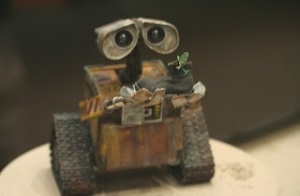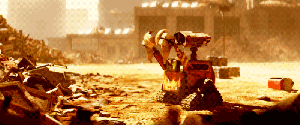 Though this film has been out for quite a while now, I must still warn everyone that spoilers await them here.
Though this film has been out for quite a while now, I must still warn everyone that spoilers await them here.
The Dark Knight trilogy begins and closes with the question of human sustainability. During its 7-year run, Director Christopher Nolan has peppered the films with the issues of clean water, the poverty gap, urban corruption. Nolan makes his loudest comment on conservation, however, by ending the series with two of the biggest concerns to human existence: the economy and the environment. And Nolan symbolizes these with his focus on nuclear energy.

Between the Dark Night and its sequel the Dark Night Rises, billionaire Bruce Wayne seems to have tried to replace his heroic Batman activities with philanthropic zeal — for a while at least. He founded a magnanimous (and expensive!) project to develop "clean" energy for all of Gotham. The benefits of such an endeavor, though largely unspoken, resonate the trilogy's theme of clean, ethical living. Unfortunately, Wayne cancelled the project without producing anything to show his investors, losing the money and confidence of the Gotham elite and himself. After this massive failure Wayne becomes a recluse and withdraws from business and society altogether, marking the decline of Wayne Industry's sustainable works.
The kicker: Wayne's project actually succeeded. Partway into the film, Wayne reveals that he created a nuclear fission core, capable of powering clean, sustainable energy for the entire city. But fearing its power, he keeps it hidden from the world. The reactor, Wayne learns during the development process, can be transformed into a nuclear time-bomb large enough to take out the entire metropolis. And Wayne won't take the chance of the reactor landing into the wrong hands.
The film begins with Wayne's colleague Miranda Tate attempting to persuade others to restart the project, expounding how important clean, sustainable energy would be for Gotham. Of course Wayne refuses, stating the project is dead and useless. To this Tate replies, "a man who doesn't care about the world doesn't spend half his fortune on a plan to save it." This line, spoken right after the return of Batman, ingeniously connects conservation efforts with Wayne's more exciting acts of heroism. Saving the world obviously comes in many forms.
The movie continues in this vein by building a humming tension centering around Gotham's seemingly inevitable collapse. Nolan clearly juxtaposes the unsustainable nature of the city's power players devouring decadence from its average, downtrodden citizens. As Catwoman impresses upon Wayne and the audience, "you're all gonna wonder how you ever thought you could live so large and leave so little for the rest of us."
No wonder Batman cannot trust humanity with the decision of sustaining or destroying itself.
 In the end, Batman's enemy Bane takes the decision away from him by stealing and weaponizing his core reactor to blackmail the city of Gotham into submission. Nolan beautifully parallels Batman's threats. A source of energy efficient enough to power his city of 12 million, locked underground just as Bane was locked away in a Middle Eastern prison. Both Bane and this reactor contain dangerous potential which are realized once they hit the surface in tangent to threaten every citizen of Gotham.
In the end, Batman's enemy Bane takes the decision away from him by stealing and weaponizing his core reactor to blackmail the city of Gotham into submission. Nolan beautifully parallels Batman's threats. A source of energy efficient enough to power his city of 12 million, locked underground just as Bane was locked away in a Middle Eastern prison. Both Bane and this reactor contain dangerous potential which are realized once they hit the surface in tangent to threaten every citizen of Gotham.
Of course Bane plans on letting the core detonate itself after it becomes too unstable. In this film about the lack of durability and the lack thereof, not even Batman's most dire threat can sustain itself for long.
The terrible state of Gotham under the nihilistic warlord Bane depicts one extreme: annihilation. Nolan shows his audience the great and terrible power we humans have in carving our own future with today's technology. And in doing so, he bring into question the ethics of progress, urban environmentalism, and the limits of human nature.
Overall, Nolan beautifully employs the Batman mythology to engage with a issue that will only become more pressing as time passes. The Dark Knight trilogy's end doesn't answer all of Gotham's problems or tie everything up in a pretty bow, but it poses at least one significant question: Does the world needs better management of our resources as urgently as Gotham needed Batman?
Up next: WALL-E and Waste













